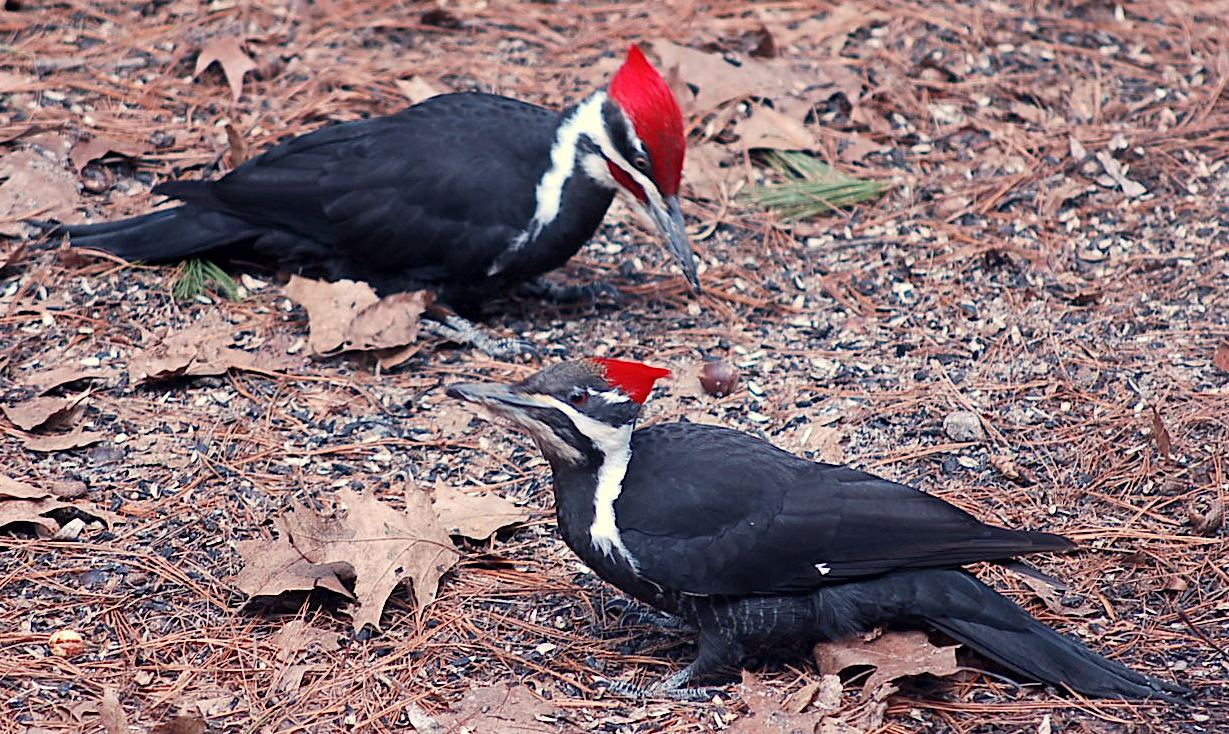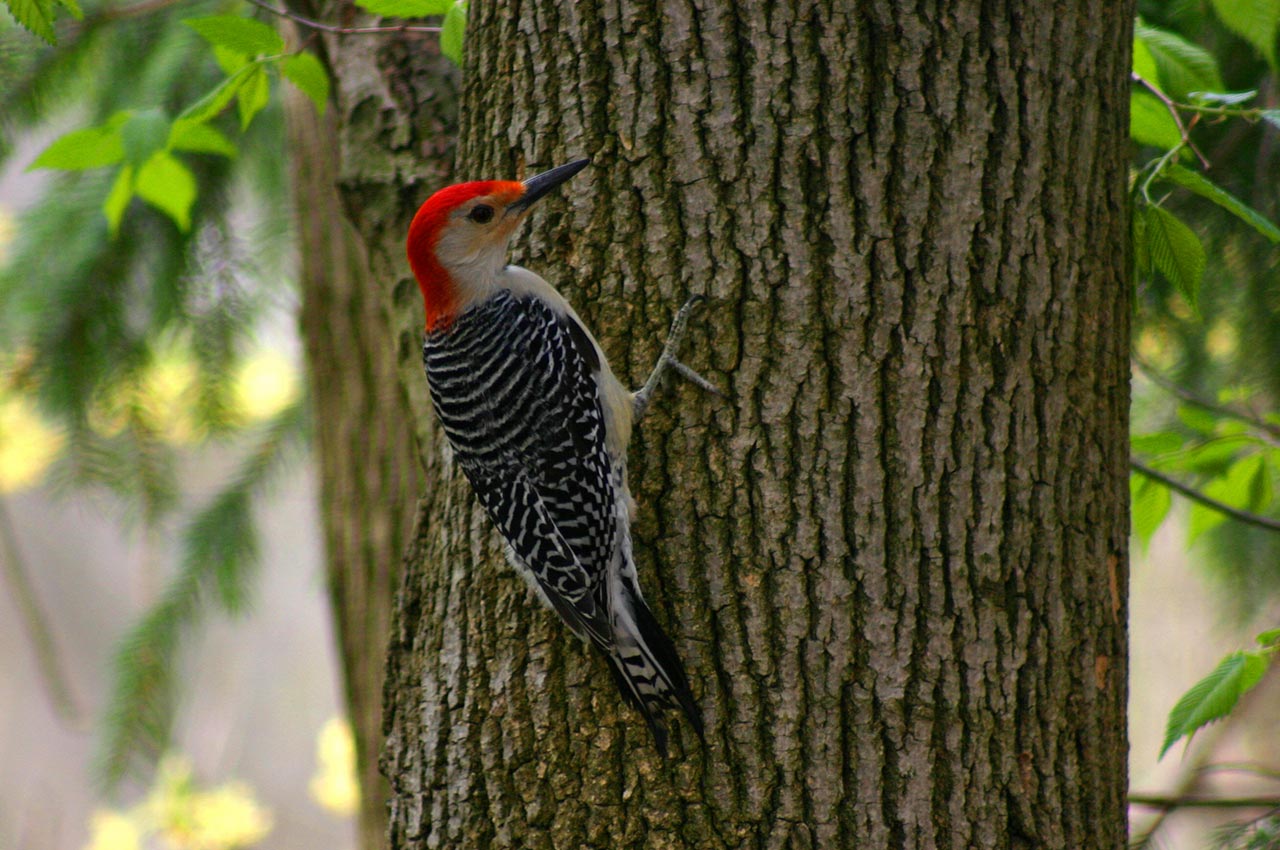Coming Across Woodpeckers in Florida: Variety Variety and Recognition
Woodpeckers: A Comprehensive Guide to Understanding These Unique Birds
Woodpeckers, with their distinct behaviors and physical characteristics, have long astounded the curiosity of ornithologists and nature enthusiasts alike. From their rhythmic drumming resembling with the timbers to their remarkable adjustments for scaling tree trunks effortlessly, these birds provide an interesting research in avian biology. However, what genuinely establishes woodpeckers apart is not just their striking look however also their important duty in keeping the fragile balance of communities. As we check out the elaborate anatomy, diverse varieties, and environmental significance of woodpeckers, a much deeper appreciation for these distinct birds and the enigmas they hold unravels.

Woodpeckers' Drumming Behavior
Woodpeckers show a rhythmic and specific drumming habits that offers various important functions in their day-to-days live. This actions is primarily connected with interaction, region defense, and foraging. The distinct drumming sound is created by the fast pecking of their beaks against tough surfaces such as tree trunks, branches, or even metal things.
Communication is an important facet of woodpecker habits, and drumming plays a substantial function in this procedure. Woodpeckers make use of drumming to establish their presence, attract companions, and keep contact with their companions and children. The regularity, intensity, and period of drumming series communicate particular messages to other woodpeckers in the area.
In addition to interaction, woodpeckers use drumming habits for region protection. Woodpeckers in Florida. The loud and recurring drumming acts as an advising to possible intruders, indicating that the location is already declared. By establishing their territory through drumming, woodpeckers minimize the chance of conflicts over useful sources such as food and nesting sites
Additionally, woodpeckers also utilize drumming as a foraging strategy. The balanced pecking helps them locate insects hiding beneath the bark of trees by developing resonances that disrupt the prey's camouflage. This actions showcases the adaptability and resourcefulness of woodpeckers in utilizing their drumming skills for multiple important functions.
One-of-a-kind Adjustments for Tree Climbing
Having actually understood the art of drumming to connect, protect area, and forage, woodpeckers have progressed distinct adaptations that facilitate their exceptional climbing capacities in their arboreal habitats. Woodpeckers have zygodactyl feet, with two toes aiming onward and 2 toes pointing backwards. These tail plumes offer stability and equilibrium, enabling woodpeckers to maneuver up tree trunks with accuracy and dexterity.
Furthermore, woodpeckers have powerful neck muscular tissues and an one-of-a-kind skull framework that help in their climbing up capabilities. Their solid neck muscle mass permit them to rapidly eat tree bark without experiencing whiplash, while Your Domain Name their thick skull and tiny mind serve as shock absorbers, protecting them from the impact of repeated drumming. These adjustments jointly make it possible for woodpeckers to browse the upright world of trees with performance and grace.

Function of Woodpeckers in Ecosystems
Playing a crucial duty in woodland ecological communities, woodpeckers add substantially to the equilibrium and health of their environments via their one-of-a-kind behaviors and interactions with other varieties. Among the essential environmental functions of woodpeckers is their role in managing insect populaces. By foraging for bugs under the bark of trees, woodpeckers assist regulate parasite populations, avoiding break outs that might damage the overall health and wellness of the forest. In addition, woodpeckers create dental caries in trees that act as important nesting sites for a selection of various other bird species, advertising biodiversity within the check these guys out ecological community.
Moreover, the drumming and vocalizations of woodpeckers play an important role in interaction and territory facility. These audios not just serve to bring in mates but also assist define borders between different woodpecker territories, minimizing conflicts and advertising a harmonious conjunction within the forest community. Generally, the existence of woodpeckers in forest communities highlights their significance as keystone species, affecting the characteristics and functioning of these environments in multifaceted methods.
Makeup: Specialized Beaks and Feet
In the complex web of woodland communities, the specialized beaks and feet of woodpeckers are important adaptations that enable them to satisfy their essential eco-friendly functions. Woodpeckers possess special anatomical functions that are especially made to help them in their foraging and nesting behaviors.
The most distinguishing characteristic of woodpeckers is their strong, chisel-shaped beaks. These beaks are perfectly adapted for exploration right into wood to reveal insects, larvae, and sap concealed beneath the bark of trees. The solid muscles and durable framework of their beaks enable woodpeckers to peck at a rate of approximately 20 times per second without creating damage to their heads.
Additionally, woodpeckers have specialized feet that aid in their acrobatic climbing capacities. Their feet have two toes aiming forward and two toes directing backward, providing a strong grip on vertical surfaces (Woodpeckers in Florida). This special foot arrangement, in addition to tight tail feathers that serve as a supportive prop, allows woodpeckers to cling to tree trunks and branches effortlessly while they search for food or excavate nesting dental caries
Woodpecker Variety Variety
Woodpeckers are a diverse group of birds discovered across various ecosystems worldwide, with over 200 known varieties check it out exhibiting adaptations to different settings. Woodpeckers have developed to inhabit an array of environments, from forests and forests to meadows and deserts, each providing distinct obstacles that have affected the development of unique woodpecker types.
Another contributing aspect to woodpecker species variety is their specialized feeding actions. Various types have advanced to manipulate numerous food sources, such as pests, tree sap, fruits, and nuts, causing the growth of certain adaptations in beak shape, size, and strength. These adaptations enable woodpeckers to forage effectively in their particular habitats, minimizing competitors amongst species and advertising niche differentiation. Furthermore, geographic isolation and historic aspects have actually contributed fit the circulation and diversity of woodpecker species, resulting in the wide selection of specialized adaptations seen in these interesting birds.

Final Thought
Finally, woodpeckers are interesting birds that show distinct drumming actions, specialized adaptations for tree climbing, and play crucial functions in communities. Their anatomy, including specialized beaks and feet, permits them to thrive in their atmosphere. With a diverse array of woodpecker varieties found worldwide, these birds are essential for preserving the wellness and balance of woodlands and woodlands. Recognizing and appreciating the complexities of woodpeckers can supply valuable insights right into the all-natural globe.